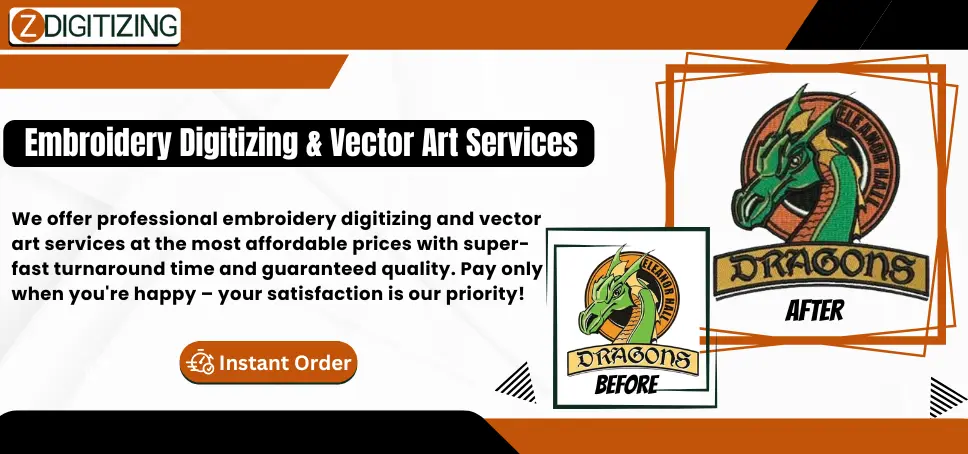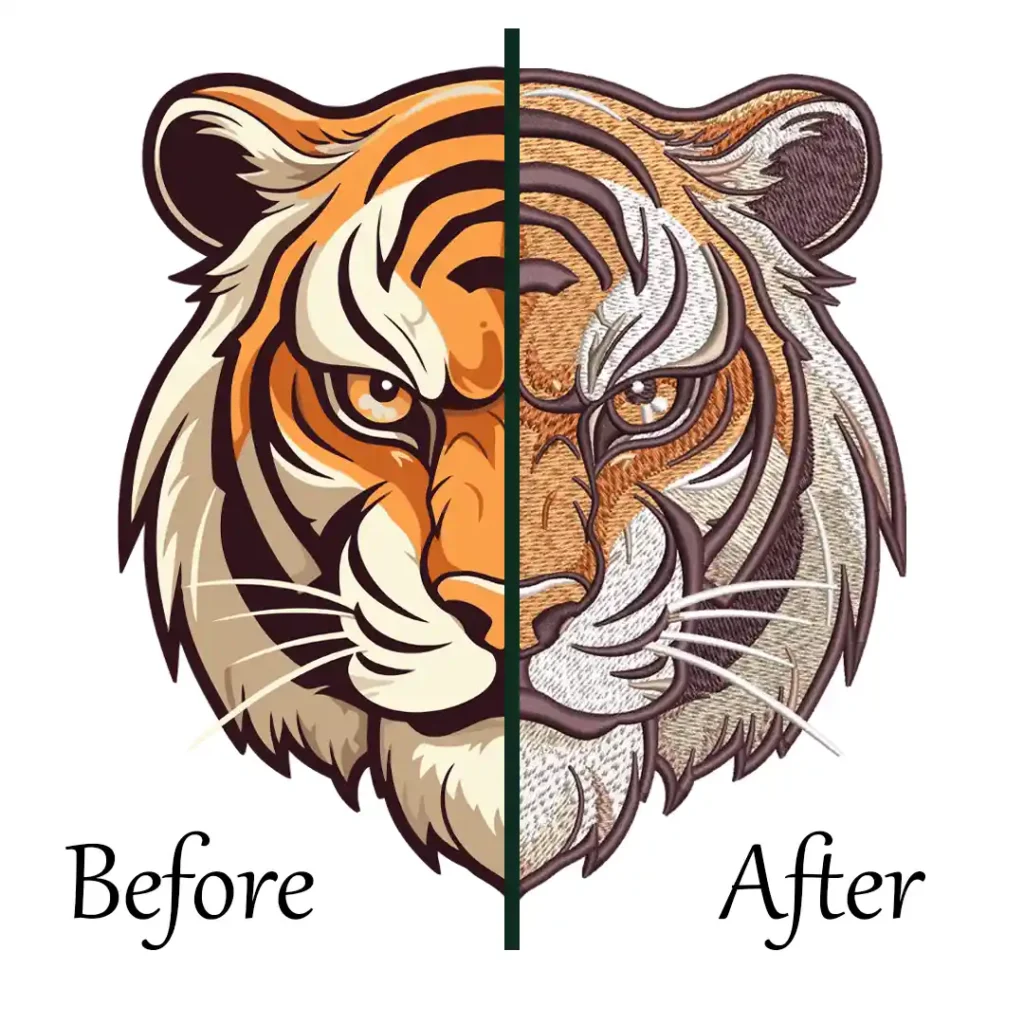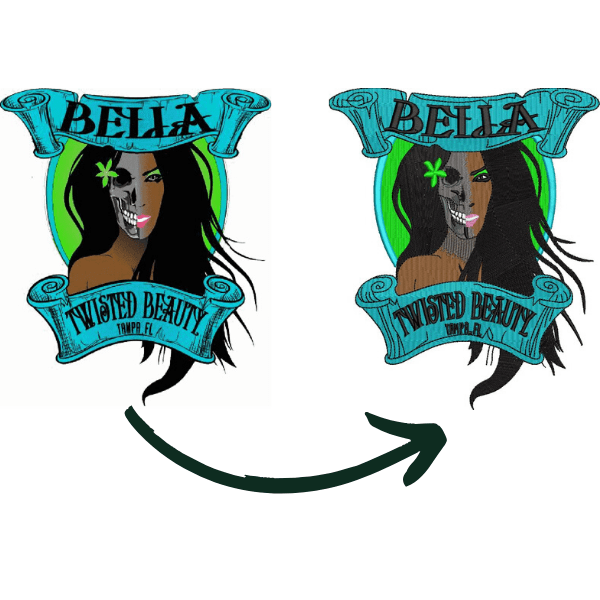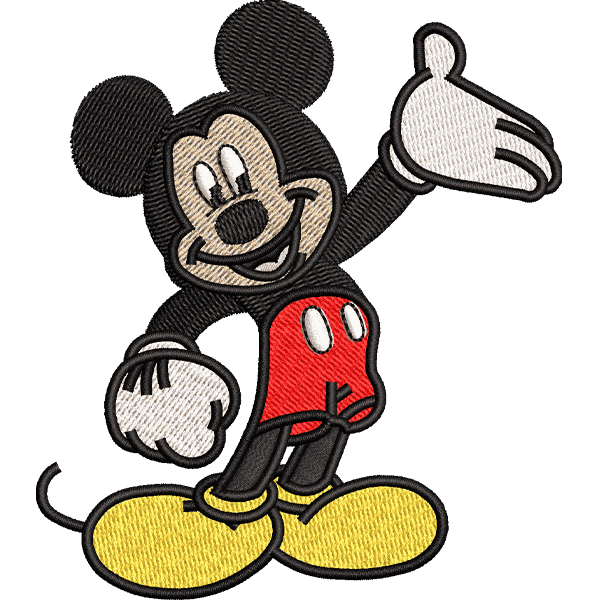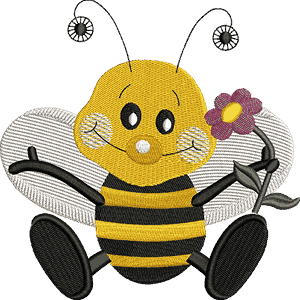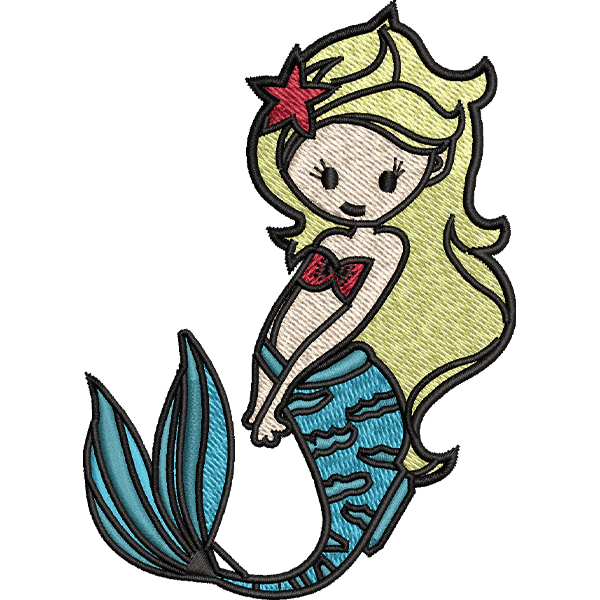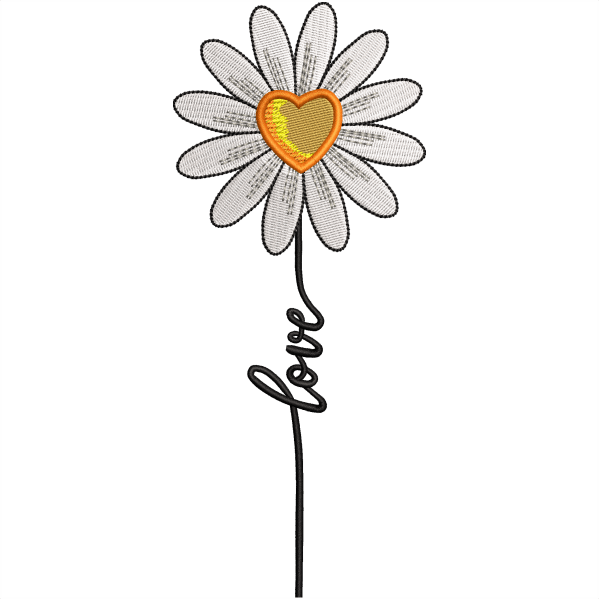When it comes to achieving perfect prints, the foundation lies in using the right screen printing materials list. Many printers make the mistake of focusing only on designs or techniques, but without proper tools and supplies, even the best artwork won’t transfer perfectly. The right materials ensure smooth ink flow, accurate detailing, proper curing, and ultimately professional-quality results that stand out.
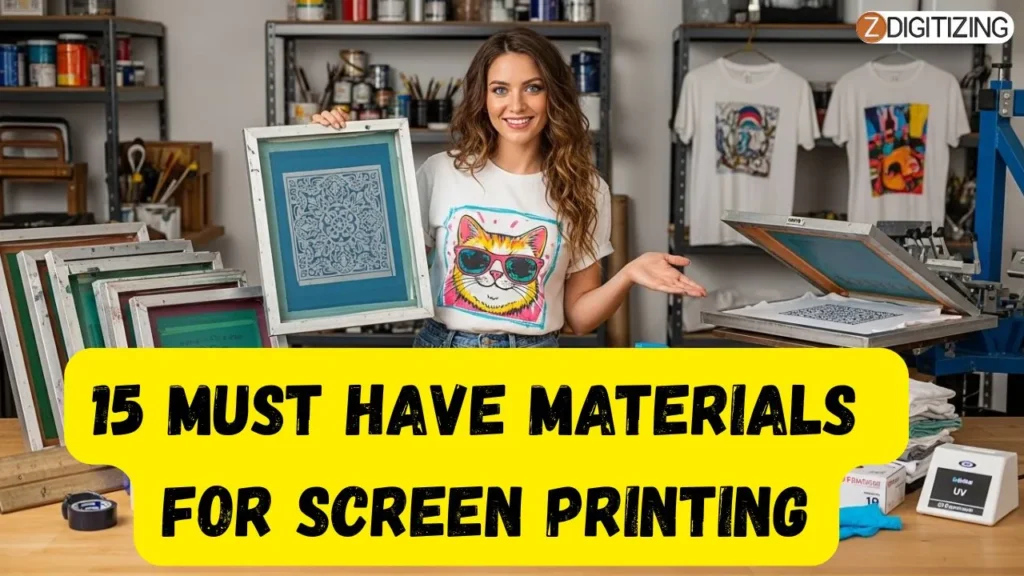
Top 15 Screen Printing Materials List for Perfect Prints
Here are the 15 most important screen printing materials every printer should have:
- Screens & Mesh
- Screen Printing Frames
- Emulsion & Sensitizer
- Squeegees
- Inks for Screen Printing
- Substrates (Printing Surfaces)
- Exposure Unit or Light Source
- Transparency Films
- Printing Press (Manual or Automatic)
- Flash Dryer & Heat Source
- Conveyor Dryer
- Adhesives & Pallet Tape
- Cleaning Supplies
- Protective Gear & Safety Materials
- Software for Screen Printing
These are the must-have essentials that create a complete screen printing setup and represent the core equipment needed for screen printing business.
Now, we will discuss each of these materials in detail, helping you understand their role and why they are crucial for producing perfect prints.
1. Screens & Mesh
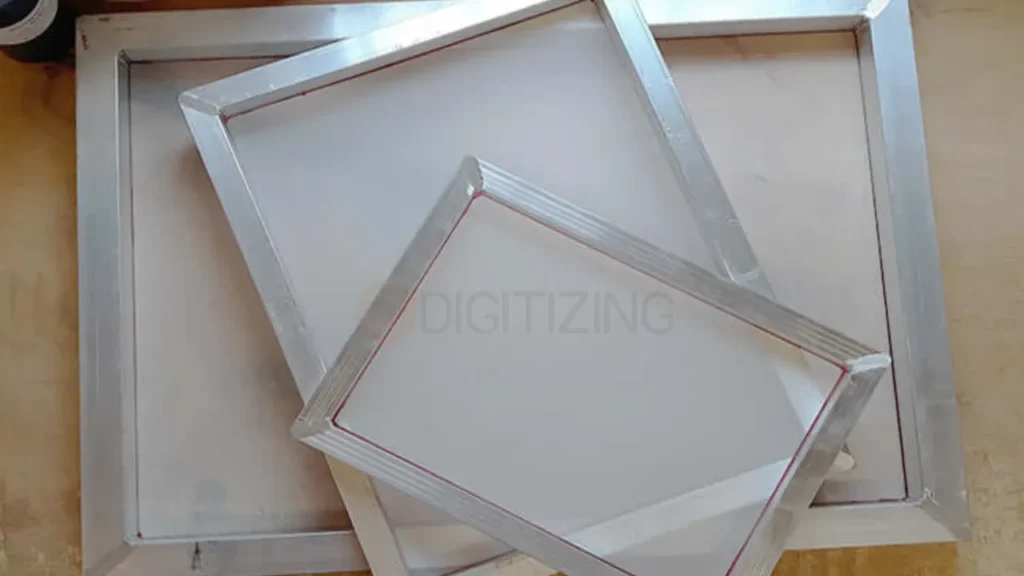
One of the most essential parts of screen printing equipment is the screen itself, which holds the mesh used to transfer your design. The mesh works as a stencil, allowing ink to pass through only the intended areas.
Choosing the right mesh count is critical because it directly affects the level of detail and the ink deposit in your print.
- Low Mesh Count (60–110): Ideal for bold designs and thicker ink deposits, such as athletic prints or glitter inks.
- Medium Mesh Count (125–160): Perfect for general t-shirt printing where a balance between detail and ink coverage is needed.
- High Mesh Count (200–305): Best for fine details, thin lines, or halftone designs where precision is key.
By selecting the right screens and mesh counts, printers can achieve clean, sharp results while maximizing efficiency and ink control.
2. Screen Printing Frames
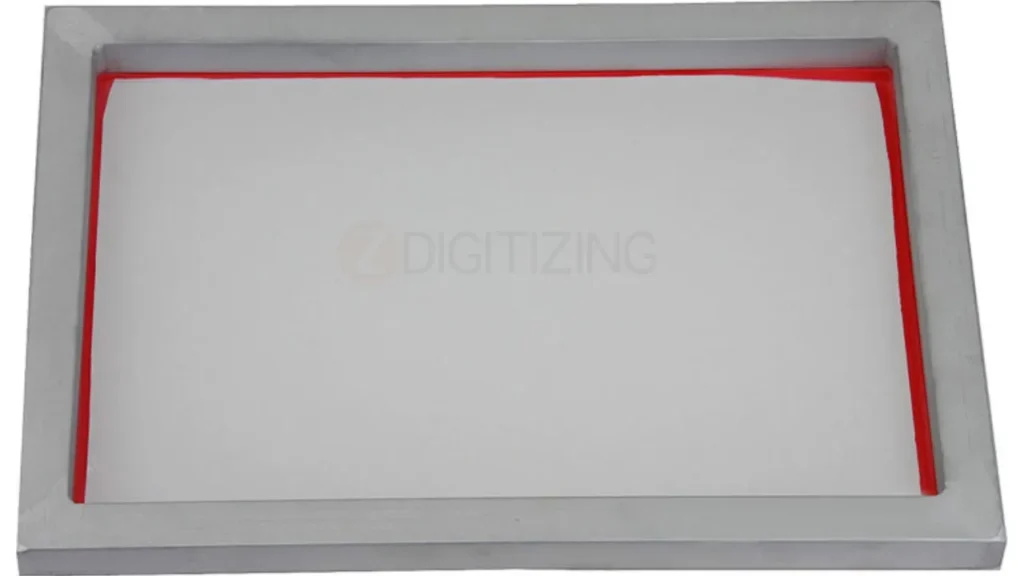
Frames are the backbone of the screen because they keep the mesh tight and stable during printing. Without a strong frame, the mesh may loosen or shift, leading to blurry and uneven designs.
That’s why frames are always included in any screen printing materials list and considered one of the most important pieces of screen print equipment for consistent and accurate results.
- Wooden Frames: Affordable and widely available, but they can warp over time, especially if exposed to moisture. Best for beginners or small projects.
- Aluminum Frames: More durable and resistant to warping. They hold mesh tension longer, making them a smart investment for professionals and long-term use.
By choosing high-quality frames, you ensure that your mesh stays secure, which helps maintain precision and repeatability in your prints
3. Emulsion & Sensitizer
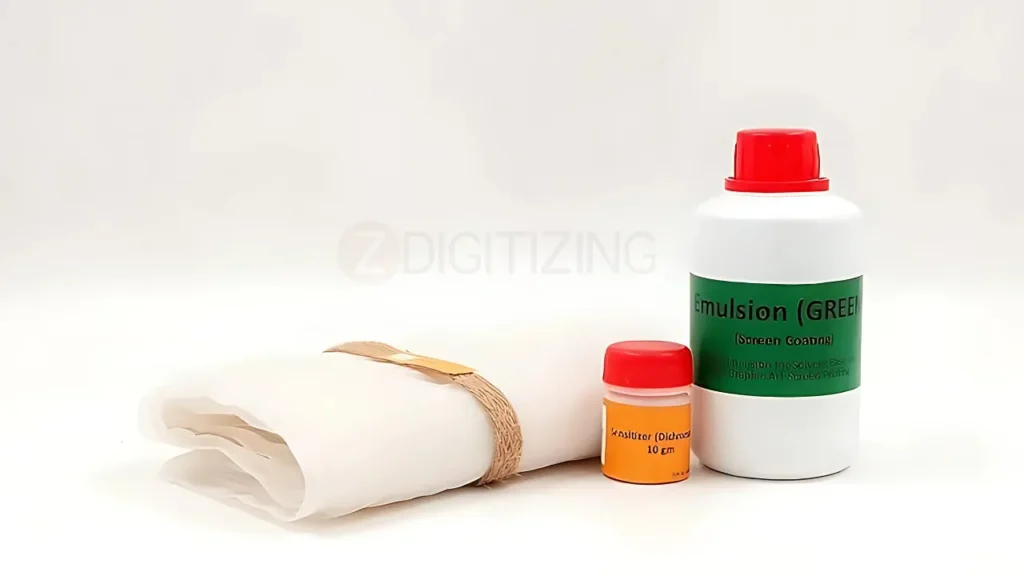
No screen printing all materials list is complete without emulsion and sensitizer, as they are the core materials used to prepare your screens for exposure.
Emulsion is a light-sensitive coating applied to the mesh, while the sensitizer activates it, making the screen ready to hold your design.
- Diazo Emulsion: Budget-friendly, durable, and great for beginners, but requires longer exposure times.
- Dual-Cure Emulsion: Offers flexibility, better resolution, and works well for both water-based and plastisol inks.
- Pre-Sensitized Emulsion: Ready to use and faster, but usually has a shorter shelf life.
Using the right emulsion ensures sharper stencils, stronger durability, and more reliable prints, making it a critical step in the screen preparation process.
4. Squeegees
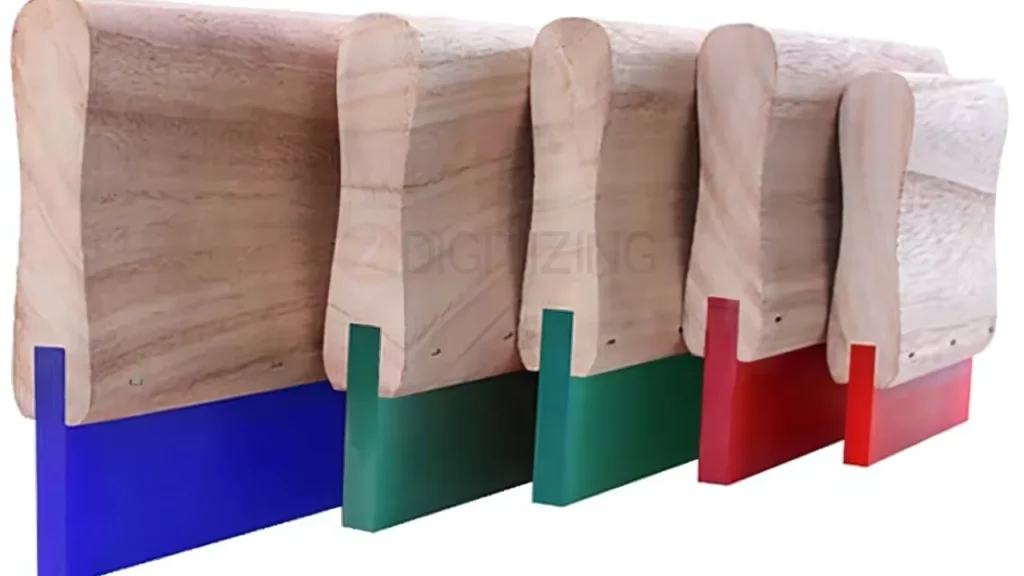
When we talk about the essentials in any screen printing materials list, squeegees always stand out.
They play a vital role in pushing ink evenly through the mesh onto the substrate, and the type of squeegee you choose directly affects ink coverage, detail, and overall print quality.
Blade Durometer (Hardness):
- Soft blades (60 durometer) deposit more ink, ideal for bold, heavy prints.
- Medium blades (70 durometer) provide a balance for everyday printing.
- Hard blades (80–90 durometer) allow precise control for fine details.
Handle Options:
- Wooden handles are comfortable but may absorb ink and wear out faster.
- Aluminum handles are more durable and easier to clean, making them a professional choice.
With the right squeegee, you maintain control over ink flow, pressure, and consistency, ensuring smooth, sharp, and professional results every time. That’s why squeegees are considered one of the most important screen printing tools and materials for any printer.
5. Inks for Screen Printing
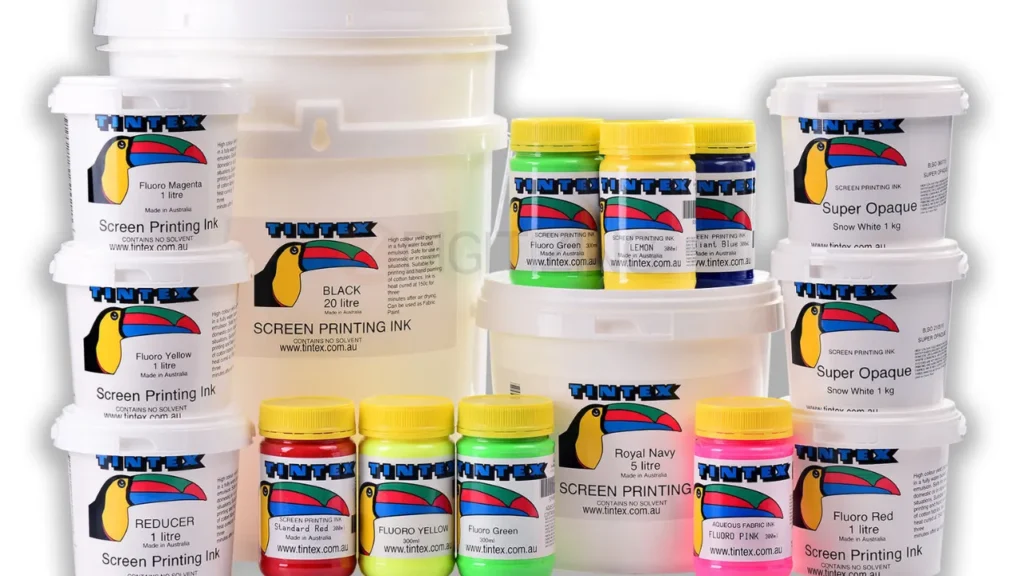
When people search for a screen printing materials list pdf, inks are always one of the first items included because they bring designs to life.
The choice of ink affects durability, texture, and the final look of your print. Understanding the types of inks ensures you pick the right one for your project.
- Plastisol Inks: The most popular option, known for vibrant colors, durability, and flexibility. Ideal for printing on fabrics.
- Water-Based Inks: Softer finish and eco-friendly, perfect for lightweight garments and breathable prints.
- Specialty Inks: Includes puff inks, metallics, glow-in-the-dark, and glitter inks that add creative effects and unique finishes.
By selecting the right ink type, printers can achieve professional-quality prints that stand out in both appearance and durability.
6. Substrates (Printing Surfaces)
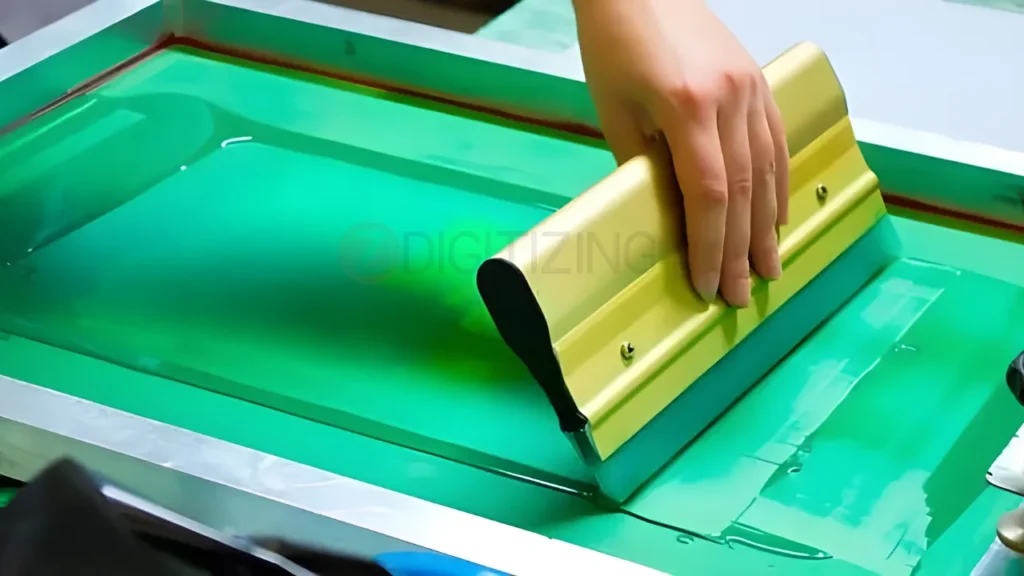
No matter how good your setup is, without the right surfaces to print on, your work won’t shine. Substrates are the foundation where your designs appear, making them an essential part of screen printing accessories.
From clothing to specialty items, choosing the right material ensures the best print results.
- T-Shirts & Apparel: The most common substrates, perfect for cotton, blends, and polyester fabrics.
- Paper & Posters: Great for custom artwork, promotional materials, and packaging.
- Specialty Fabrics & Items: Includes tote bags, hoodies, wood, and even glass for creative projects.
The choice of substrate determines not only how your print looks but also how long it lasts, so selecting the right surface is just as important as the printing process itself.
7. Exposure Unit or Light Source
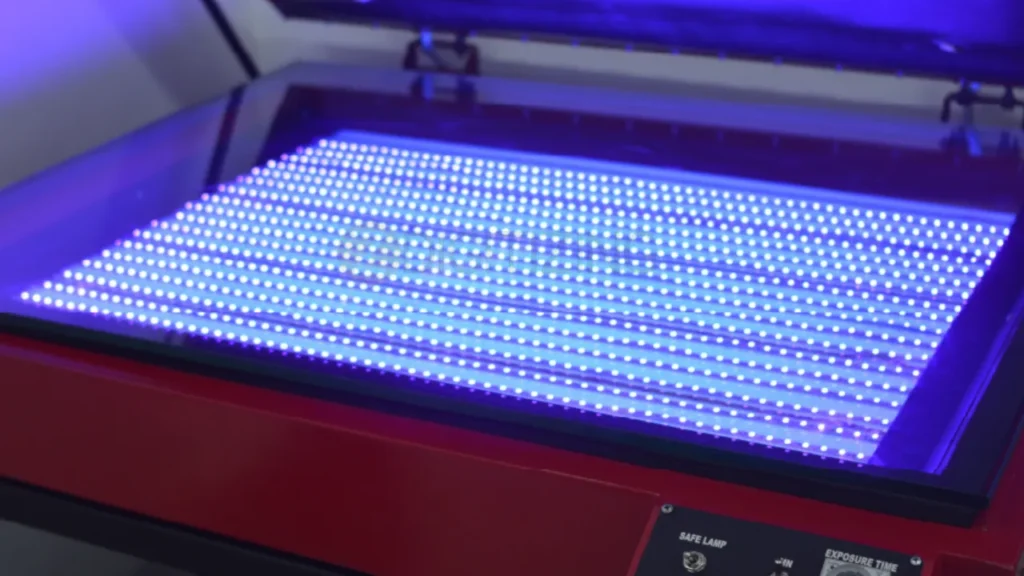
Preparing your screens requires proper exposure, and that’s why an exposure unit is one of the most important supplies for screen printing. This equipment hardens the emulsion on the mesh, allowing your design to be accurately burned onto the screen.
Without correct exposure, your stencil may wash out or fail to hold details. It’s also a key item often included in any screen printing materials list.
- DIY Light Sources: Affordable options like high-wattage bulbs or sunlight can work for beginners, though consistency may vary.
- Professional Exposure Units: Provide even, reliable light distribution for sharper stencils and faster production.
Using the right exposure setup ensures your screens are durable and capable of producing detailed, repeatable prints.
8. Transparency Films
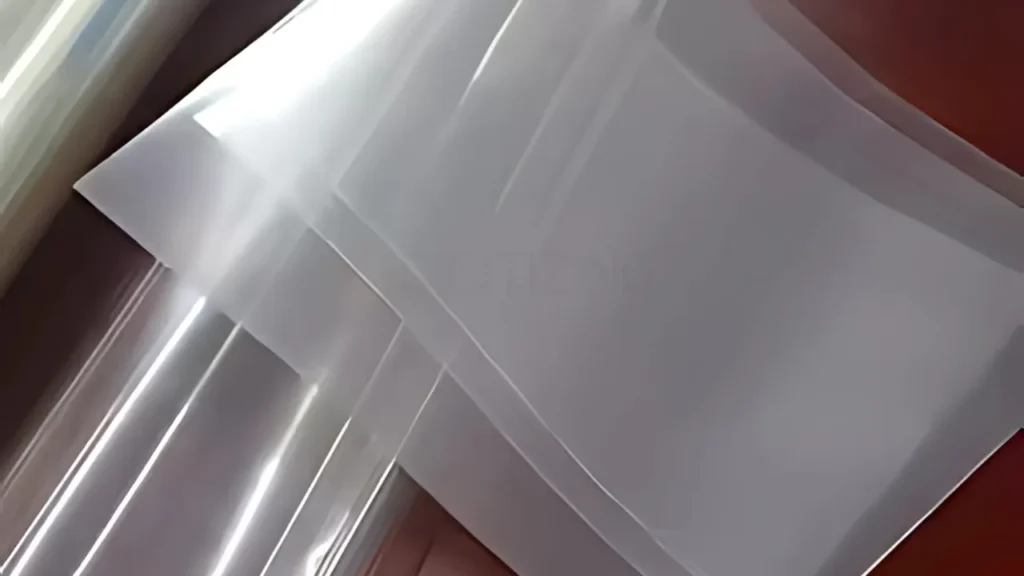
To transfer your artwork onto the screen, you’ll need high-quality transparency films. These films are printed with your design in opaque black ink so the light can properly block out areas during exposure. Among the most practical screen printing tools, transparency films play a vital role in ensuring clean, sharp stencils.
A professional printing shop equipment list is never complete without them, since they are the bridge between digital artwork and the physical printing process.
- Inkjet Films: Popular for detailed designs, offering excellent opacity and clarity.
- Laser Films: Durable and precise, ideal for shops using laser printers.
With the right transparency film, your designs will burn cleanly onto the screen, reducing errors and improving overall print quality.
9. Printing Press (Manual or Automatic)
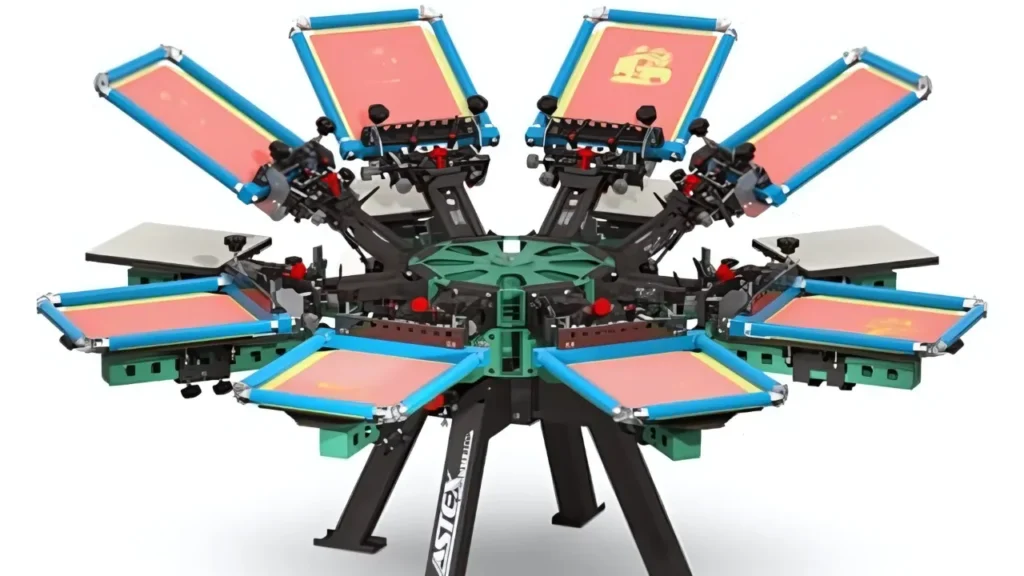
At the heart of every shop is the printing press, one of the most vital screen printing supplies you can own. A press keeps your screens steady, aligned, and allows you to apply consistent pressure during printing. Without it, producing high-quality, repeatable prints would be nearly impossible.
When building your list, the type of press you choose depends on your production scale and budget:
- Manual Presses: Affordable and great for beginners or small businesses. They allow hands-on control but require more effort for larger runs.
- Automatic Presses: Best for professional shops handling bulk orders. They save time, reduce fatigue, and provide consistent results across hundreds of prints.
A reliable press ensures precision, efficiency, and professional-quality output, making it a cornerstone of any serious screen printing operation.
10. Flash Dryer & Heat Source
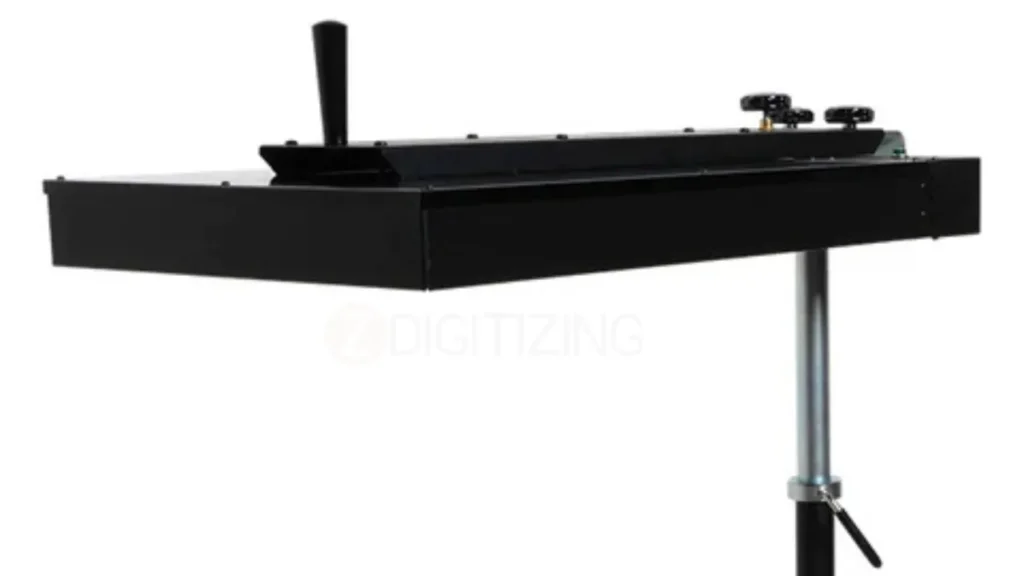
A flash dryer is an essential item you’ll always find in any professional screen printing materials list. It is used to partially cure or “flash” the ink between color layers, preventing smudging and allowing for crisp multi-color prints.
When choosing equipment for screen printing, a heat source like a flash dryer or even a heat gun (for beginners) is critical to ensure your prints cure properly. Without proper curing, ink may crack, fade, or wash out after just a few uses.
- Flash Dryers: Provide even heat, making them perfect for spot curing and intermediate layers.
- Heat Guns: A low-cost option for hobbyists, though less consistent compared to professional dryers.
By investing in the right heat source, printers can achieve durable, long-lasting prints that maintain their quality over time.
11. Conveyor Dryer
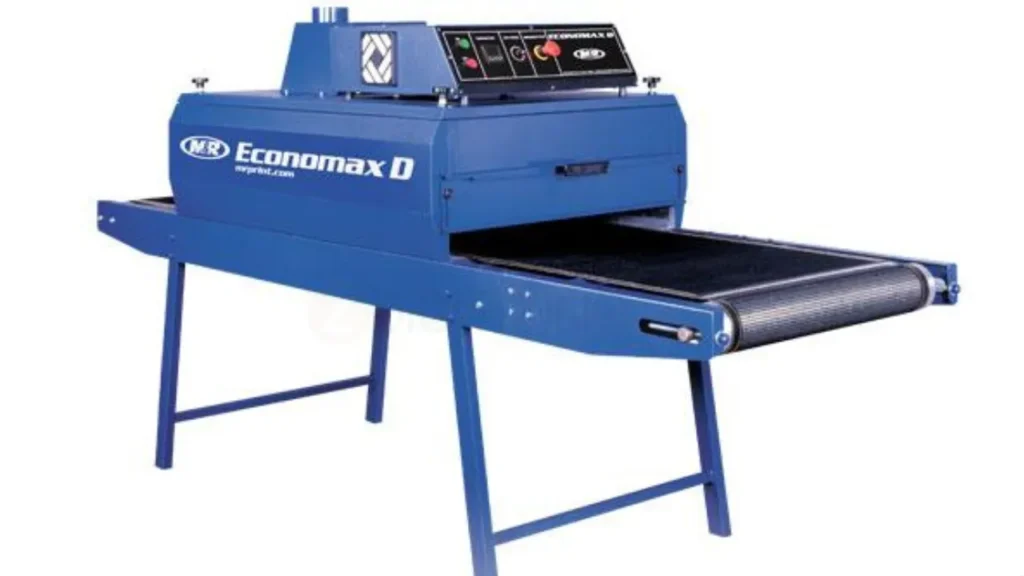
For high-volume production, a conveyor dryer is one of the most important silk screen printing materials you can invest in. Unlike flash dryers, which cure small batches, conveyor dryers allow continuous curing of prints, making them ideal for professional shops.
They’re also a standard part of any screen printing materials list for businesses aiming to scale production.
- Consistent Heat: Ensures every print cures evenly, preventing issues like cracking or fading.
- High Efficiency: Perfect for bulk orders, as garments move along the belt and cure automatically.
- Professional Finish: Delivers a long-lasting bond between ink and fabric, guaranteeing durability.
Adding a conveyor dryer to your setup not only boosts productivity but also gives your prints a polished, retail-ready finish.
12. Adhesives & Pallet Tape
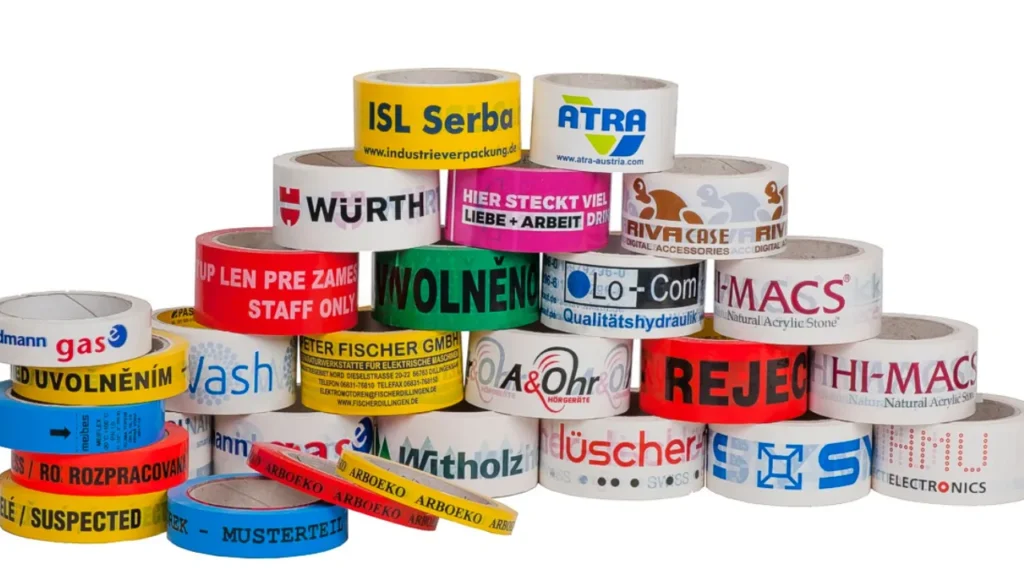
Keeping your garments in place during printing is crucial, and that’s where adhesives and pallet tape come in. In fact, if you check any print shop equipment list pdf, you’ll always find these items included because they’re small but highly effective in maintaining print accuracy.
- Spray Adhesives: Quick and easy to apply, ideal for temporary hold on shirts.
- Pallet Tape: Protects the platen from ink build-up, saving time during clean-up.
These low-cost yet essential tools prevent mistakes, protect your press, and make your printing workflow smoother.
13. Cleaning Supplies
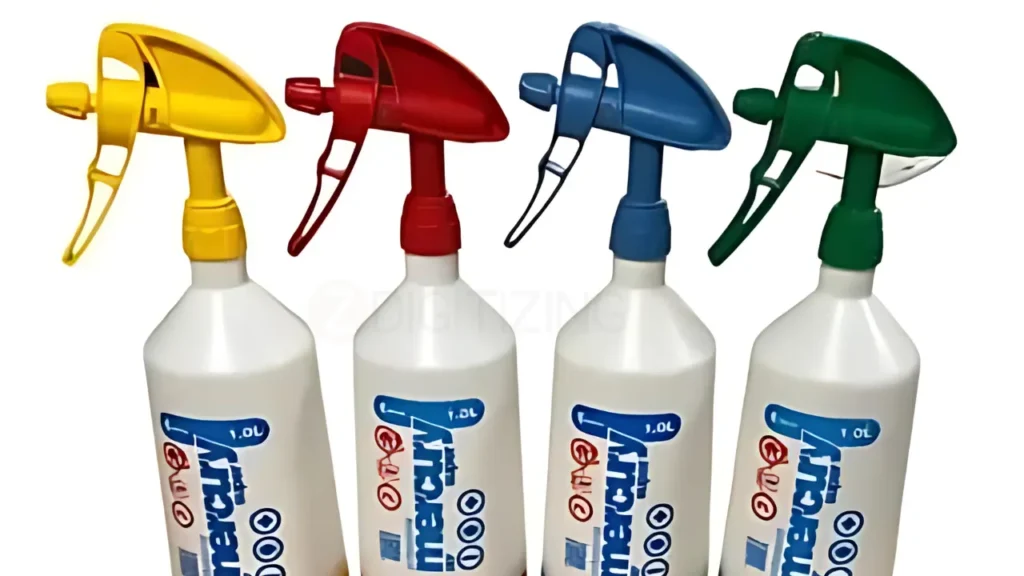
No screen printing materials list is complete without proper cleaning supplies. After every print job, screens and tools must be cleaned thoroughly to maintain their quality and extend their lifespan.
Skipping this step can damage equipment, waste screens, and affect the consistency of future prints.
If you look at any professional screen printing equipment list, cleaning products always have a special place. They not only keep your setup in top condition but also ensure that inks don’t dry out and ruin the mesh.
- Screen Degreasers: Remove dirt, oils, and residue before applying emulsion.
- Ink Removers: Break down plastisol or water-based inks for easy cleaning.
- Pressure Washers: Used for reclaiming screens and removing hardened emulsion.
Keeping your equipment clean guarantees sharper prints, longer-lasting tools, and a more efficient workflow.
14. Protective Gear & Safety Materials
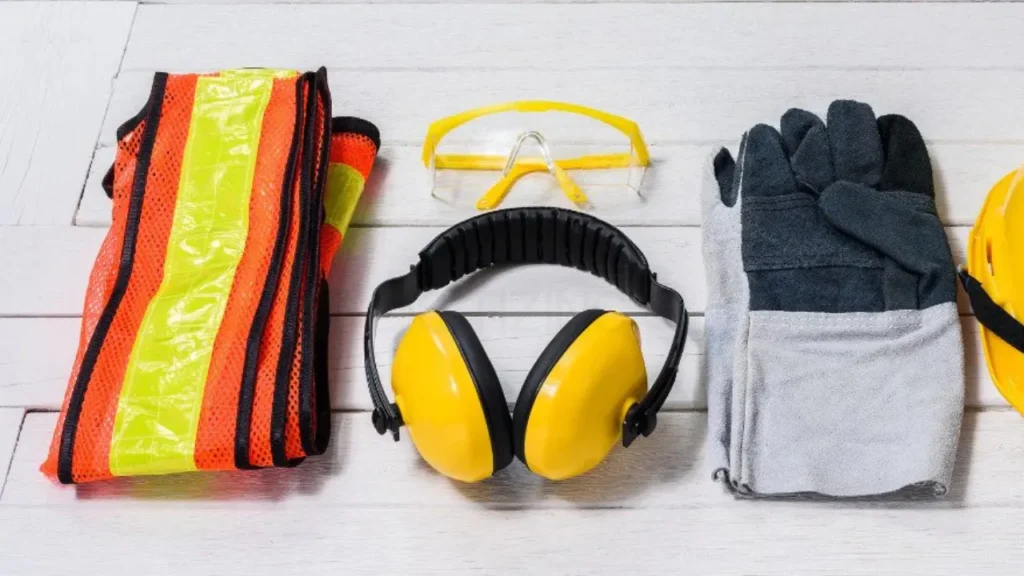
Safety is often overlooked, but it should always be part of your screen printing material list. Handling inks, emulsions, and cleaning chemicals requires basic protective gear to keep you safe while working.
Even if you’re using a screen printing machine for beginners, protective items ensure you can print comfortably and without health risks.
- Gloves: Protect hands from harsh chemicals and ink stains.
- Masks & Respirators: Prevent inhalation of fumes from solvents and sprays.
- Aprons & Safety Glasses: Keep your clothes and eyes safe during printing and cleaning.
These materials may seem simple, but they’re essential for maintaining a safe and professional printing environment.
15. Software for Screen Printing
In the modern printing world, digital tools are just as important as physical equipment. That’s why software for screen printing business is included in every complete setup. From creating artwork to managing customer orders, the right software makes your workflow faster, smoother, and more professional.
It’s also often highlighted in a screen printing materials list, since software complements physical tools to achieve the best results.
- Design Software: Programs like CorelDRAW, Adobe Illustrator, or Affinity Designer help prepare artwork for screens.
- Order Management Tools: Keep track of clients, invoices, and job progress to stay organized.
- RIP Software: Ensures accurate film output and proper halftone creation for detailed designs.
By integrating the right software, you not only save time but also reduce errors, making your screen printing operation more efficient and scalable.
Conclusion
A complete screen printing materials list is the foundation of producing professional-quality prints. From screens and inks to squeegees, dryers, and protective gear, every item plays a vital role in ensuring durability and sharp results. And if you’re setting up a shop or scaling your business, having the right machines from a trusted printing press equipment list is equally important for handling large projects with speed and precision.
But remember, your equipment can only perform as well as the designs you use. For high-quality screen prints, artwork must be vectorized to keep edges sharp at any size, ensuring perfect detail transfer. That’s where ZDigitizing comes in.
At ZDigitizing, we provide manual vector tracing and embroidery digitizing services with guaranteed quality at the most affordable rates.
You’ll get quick turnaround times, 24/7 customer support, and secure payment methods that make outsourcing simple and stress-free. Best of all, we offer 50% off your first order, so you can test our quality at half the price.
So why wait? Outsource your vector art and digitizing needs to ZDigitizing today and get 50% off.
FAQs
The most common materials include screens, frames, emulsions, squeegees, inks, substrates, dryers, and cleaning supplies. Each plays a role in producing clear, durable, and professional prints.
Yes, you can. However, using a low-bleed plastisol ink or adding a blocker base is recommended to prevent dye migration and ensure vibrant results on blends.
The six types are spot color, halftone printing, simulated process, CMYK printing, discharge printing, and specialty printing (like puff or metallic inks).
You can create a screen printing materials list PDF by including all essential items—screens, frames, inks, press, dryers, and safety gear—organized by category for easy reference.
A small manual press with 1–4 colors is the best option for beginners. It’s affordable, easy to use, and perfect for learning the basics before scaling up.
You can buy them from specialized suppliers like Ryonet, ScreenPrinting.com, or Amazon, where you’ll find everything from starter kits to professional-grade tools.
Design software like Adobe Illustrator, CorelDRAW, or Affinity Designer is essential. RIP software may also be needed for film output and halftone control.

